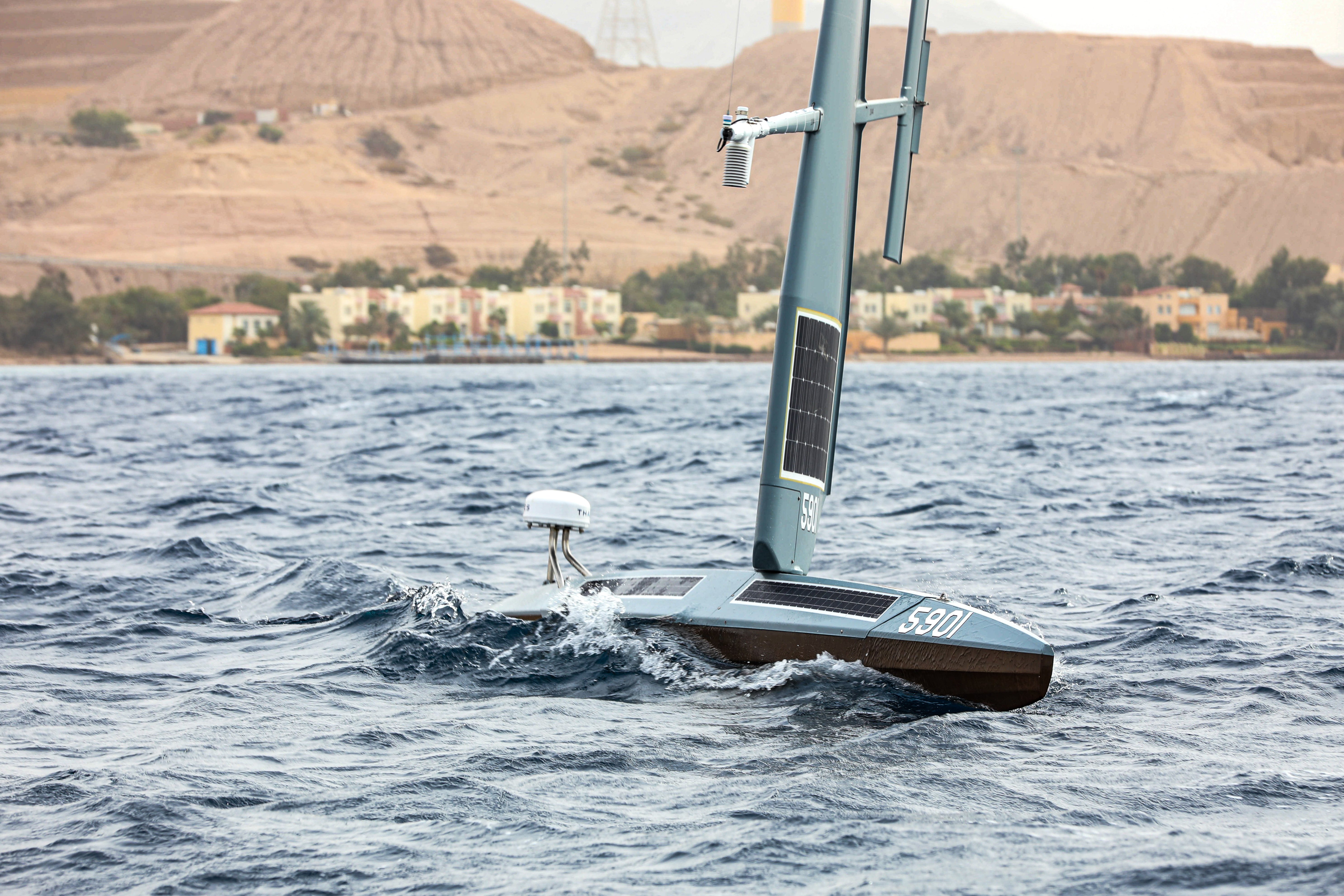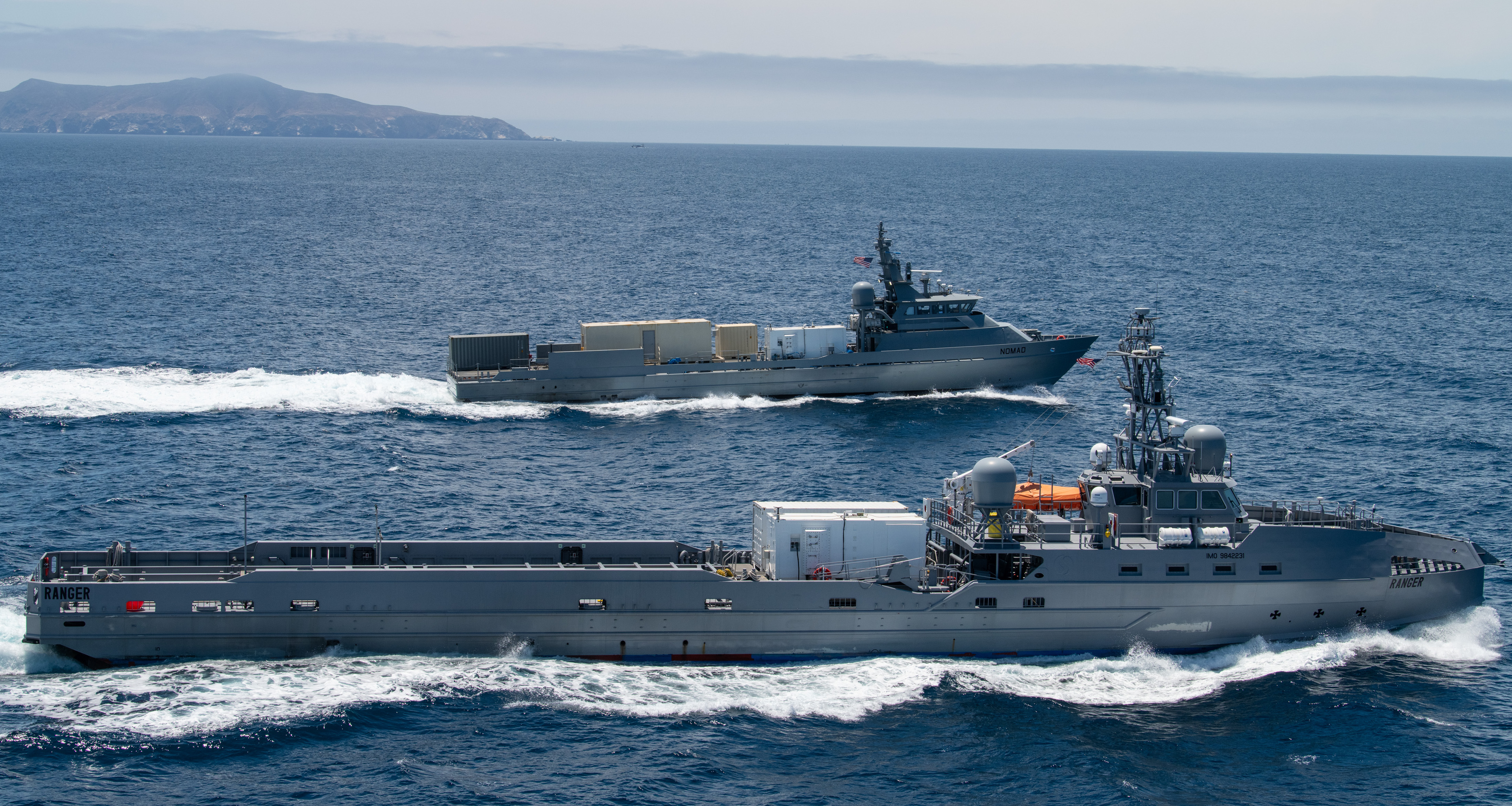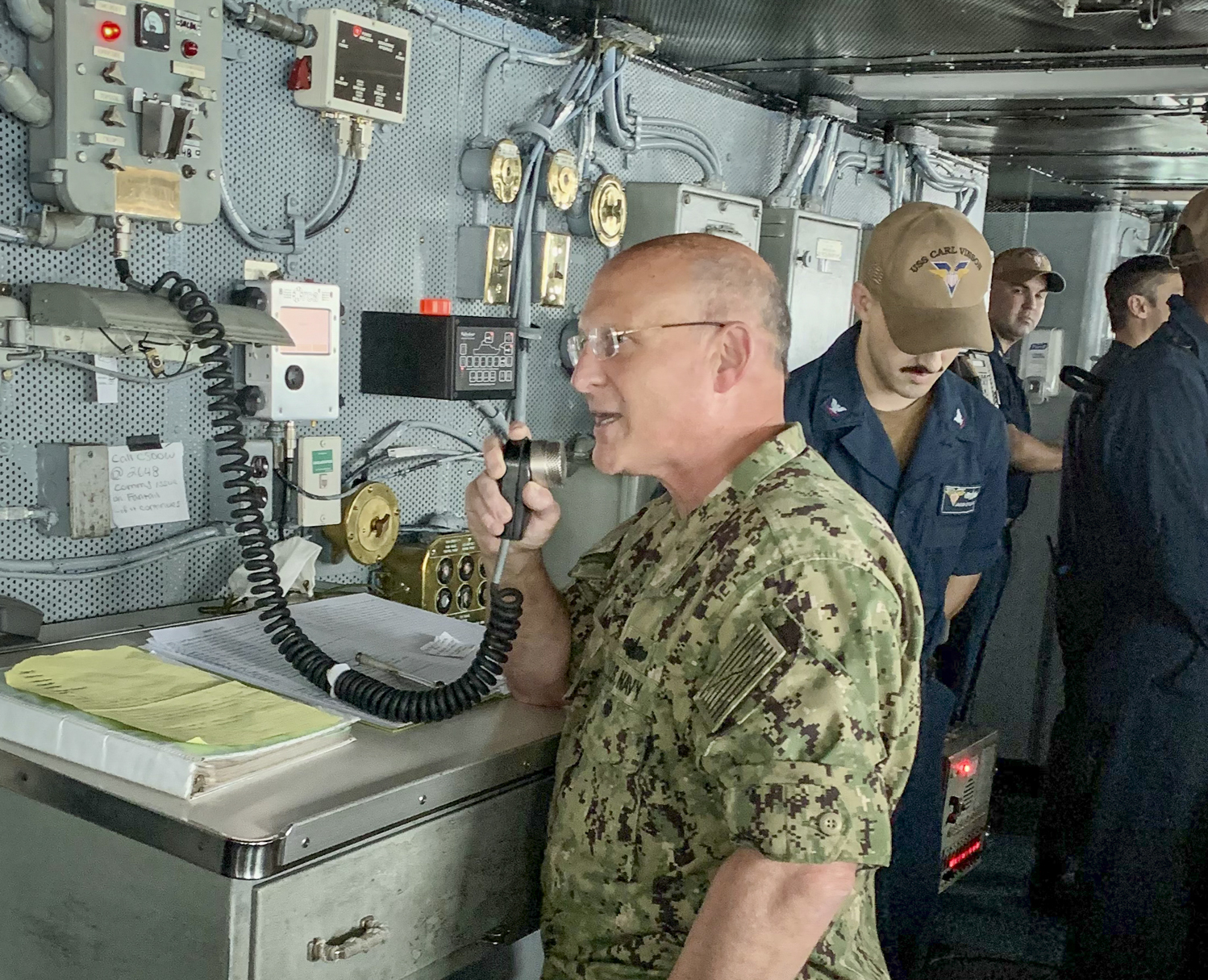
SAN DIEGO, Cailf., – In the next five years the Navy wants to put smaller unmanned platforms in the fleet now while it waits for larger unmanned ships and aircraft to reach a level of reliability to fight with the crewed fleet in the 2030s, Chief of Naval Operations Adm. Mike Gilday told a group of reporters on Wednesday.
China has the largest navy by hull count, 355, and the U.S. wants to blunt Beijing’s advantage by augmenting its manned ships and aircraft with unmanned and lightly crewed platforms that expand the awareness and weapons of the fleet, Gilday said.
“We feel that we have a very good understanding of how conceptually, we’re going to fight in the future, that’s now informing what we’re going to fight with what we believe to be a very large area, coming at an aggressor across many different vectors,” he said. “Capabilities [are] really important, but that capability is going to be a derivative of capacity.”
But how quickly the Navy can develop the platforms is an open question. The fielding for the unmanned systems has been slowed by Congressional requirements that call for the service to complete an extensive testing program before buying a fleet of unmanned ships.
Faced with limited budgets and a growing Chinese threat, Gilday wants to take a “realistic approach and evolutionary approach to finally getting to the point, hopefully, in the 2030s, where we really do have a hybrid fleet, where we can make Distributed Maritime Operations come alive in a way that would be highly effective if we actually had to fight,” he said.

The service has concept design contracts out for the Medium and Large Unmanned Surface Vehicles that would conceptually deploy with crewed guided-missile warships and amphibious ships. The ships would extend the range of the sensors and provide remote weapons magazines that could fire when cued by a crewed warship. Those ships – some as large as a 2000-ton corvette – are subject to the Congressional testing requirement.
“We’re moving in an evolutionary instead of a revolutionary manner, in order to deliver a platform [that] is going to be reliable and that’s actually going to perform as intended,” Gilday said. “We could actually learn greatly from our land-based engineering test sites … specifically up in Philadelphia, Pennsylvania, where we can take an engineering configuration that we want to use on a specific platform.”
While the Navy is proving those systems to Congress, Gilday wants to get other types of smaller vehicles into the fleet sooner.
He used the ongoing experimentation with U.S. 5th Fleet’s Task Force 59 and International Maritime Exercise 22 as a test case for what can be done with smaller systems that can be employed faster.
U.S. 5th Fleet is using commercial unmanned surface systems that include the wind-powered, 23-foot-long Saildrone Explorer that has operated out of Jordan and MARTAC’s Mantas T12 USV that has operated from Bahrain. Gilday also said the Navy is studying unmanned systems used by other exercise participants including, Israel and India.
The Navy is also experimenting with unmanned ships and aircraft that can be deployed from almost any ship.
“If there are small unmanned aviation assets that can fly a couple of thousand miles and have payloads that extend our range for [information, surveillance and reconnaissance] it makes me less dependent upon programs like a MUSV. Maybe I don’t have to buy as many of those,” Gilday said.
“Maybe I just have to invest in smaller platforms that are also more expendable, but allow me to deploy them off of a variety of platforms, and extend our ISR range, or even our weapons range if they’re if we can weaponize some of those variants.”

While the mechanical reliability of the platforms is a major point of concern, so are the networks that transmit the targeting data. The service plans to use its existing networks to transmit surveillance data and targeting information the same way a smartphones transitions from lower to different networks as a user moves from Wi-Fi to a cellular data network.
“The software on the phone shifts you to a [cell] network automatically. You don’t care, the phone doesn’t care, you’re just getting, you’re just getting the information you want when you want it. It’s that same type of idea where software would decide,” Gilday said.
“The system would then containerize it in a way that could ride on any one of those lightning bolts. It could move on any one of those systems to get to the endpoint system. It’s leveraging the fact that every shooter doesn’t necessarily have to sense the target that you’re going to that it is going to fire at. That it can be set the target it can be… radio silent.”
The Navy has tested the software-defined system in San Diego and Gilday said there are plans to test a battle group with the concept later this year or in early 2023.
The new tack from the Navy will get new unmanned systems to the fleet faster and inform the larger systems that are developing more slowly.
“We thought that was important, or I thought that was important from a risk-reduction standpoint so that we could begin to mature and then hopefully scale unmanned capabilities at a faster pace,” he said.





